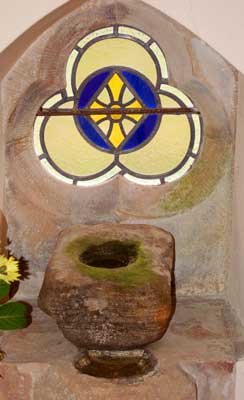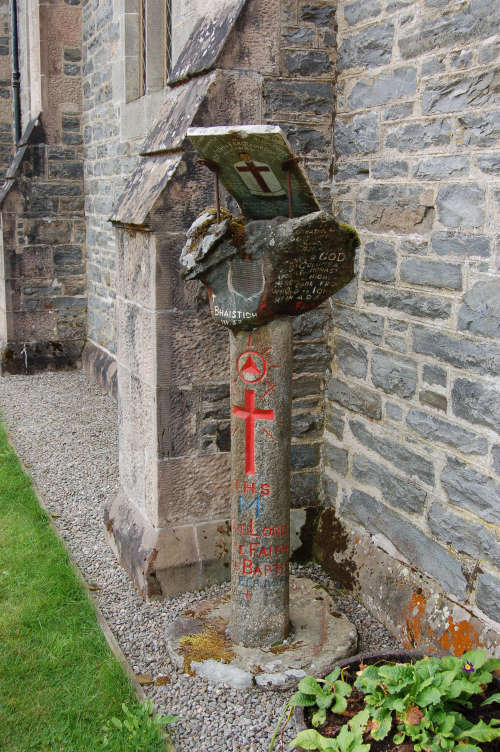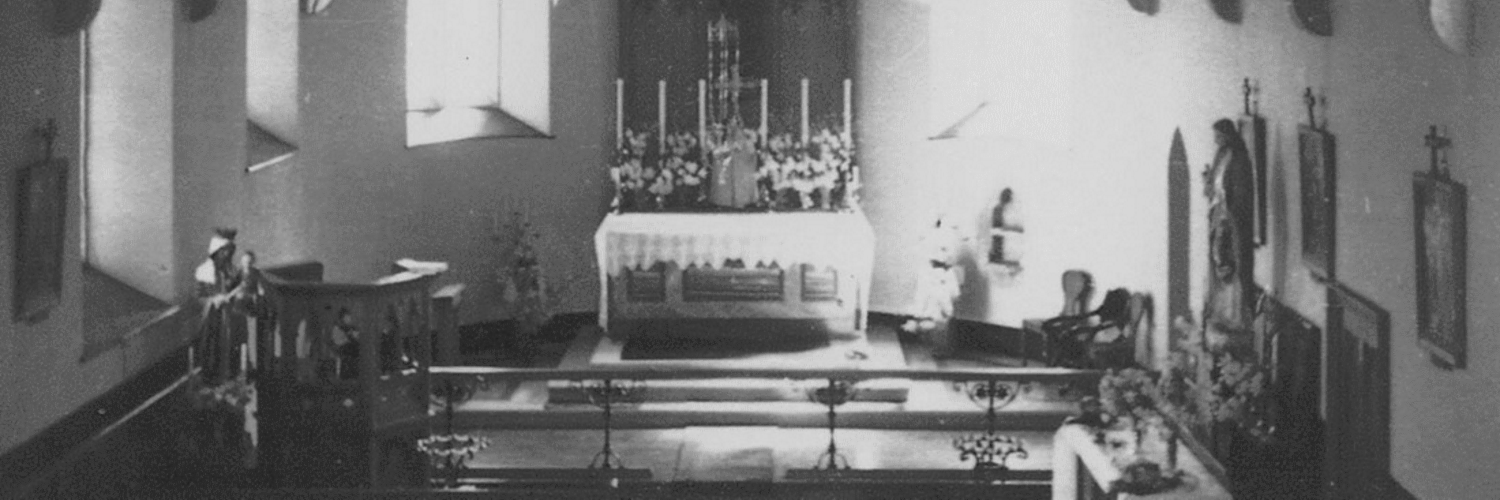Christianity in Strathglass
The first mention of Christianity in the Highlands is Saint Columba’s famous journey up Loch Ness to convert the Pictish king Brude at Inverness, where his miracles in the Name of Jesus overcame the druid priests. On the way to Inverness he encountered the Loch Ness monster, at that time a fierce beast, and by the sign of the Cross tamed it, so that today the monster is very shy and retiring! In a later journey St. Columba administered the first recorded baptisms in Glen Urquhart.
St. Bean (pronounced Bane), was the cousin of St. Columba, succeeding him as Abbot of Iona. Tradition is that he evangelised Strathglass. He gives his name to St. Bean’s spring, which is on the hillside across the road from Clachan Comar, and was, until the mid-twentieth century, the drinking supply for Kerrow, the farm to the west.
Strathglass “Pestered With Popery” & Knockfin

Many Highlanders retained Catholic practises after the Reformation. In 1579, Thomas Chisholm, laird of Strathglass, was imprisoned for being a Catholic. Around 1670, Father Robert Munro, to be known as The Apostle of Strathglass, was appointed to the Highland mission. In 1699/1700, confirmation was administered in the Highlands for the first time since the Reformation. Two years later the presbytery records ‘Strathglass and ye parish of Commir is so pestered wi’ popery that a total defectione is feared there if not speedily prevented.’
Colin Chisholm of Knockfin, the second son of Alexander Chisholm, laird of Strathglass, was instrumental in opening mission stations near Knockfin (Achad-na-eglaise – church field) and Clachan Comar. At this time, the Clach-a-Bastaidh (see below) was placed near the door of the chapel at the clachan. It is now near the entrance to Marydale church
The holy water stoup from Knockfin is still in use in the porch at Marydale. In 1681 another Mass centre opened at Tomich.
In 1707 Bishop James Gordon confirmed 123 candidates in Strathglass alone, and over 2,000 in the Highlands altogether. By the census of 1709 there were 640 Catholics in Strathglass.
The Jesuit Mission & Fasnakyle

The plaque on the front reads:
AMDG (Ad maiorem Dei gloriam – For the greater glory of God – Motto of the Jesuits)
Rev John Farquharson of the Society of Jesus (of the family of Inverey, Braemar).
Born 1699, died at Balmoral Castle 1782. For many years he was apostolic missionary of Strathglass and made use of this cup-shaped stone in administering the holy sacrament of Baptism in Glen Cannich to the children of the faithful of Strathglass and surrounding districts.
It was placed on a stone pillar near the church of St. Mary and St. Bean in respectful and affectionate remembrance of his great grand niece Maria Frances, wife of Captain A Macrae Chisholm who served for many years in the Black Watch or 12th Royal Highlanders.
31st July 1882 (Feast of St. Ignatius)
Glassburn Strathglass
Alexander MacRae S.J. (who founded the church at Dornie) took over the Strathglass mission when Father Munro was captured. By 1714 there were over a hundred Catholic families and Mass was openly celebrated. By 1720 Father MacRae had made 395 further converts in Strathglass alone.
He was joined by a famous triad of Jesuits – John Farquharson and his brother, and Alex Cameron. Father John built the priests’ house and chapel at Fasnakyle. Mass houses were also built at Crochail and Strathfarrar.
Father John, or Maghistair Iain as he was known locally, dressed in kilt and tartan hose to avoid detection and learned to speak Gaelic which was spoken by his parishioners throughout Strathglass. He gathered a fine collection of Gaelic poetry which unfortunately did not survive, some pages were seen to have been used to kindle a fire in the Scots College of Douai, by those who were unaware of their great value.
There is a short story of his altercation with the devil as an ‘old carle, with a noise like a thousand thunders, and spitting fire, flame and smoke’ who dived into the river at Cannich bridge.
After the defeat at Culloden, the penal laws were reinforced. Father John was captured by redcoats at the old meeting house at Balnahoun while celebrating Mass. When his male parishioners moved to kill the soldiers and rescue him, Father John drew a line on the ground and forbade any man to cross it to avoid bloodshed. The women, however, were not held by his instruction and recovered his vestments as he was being led away. He was transported to Hanover, but the captain of the convict ship smuggled him back to Scotland, virtually on the next tide. He returned to Cannich and the three priests hid up Glen Cannich in a temporary hide at the Brae of Craskie. It was at this time he baptised the locals in the Clach-a-Bastaidh.
The Farquharson brothers gave themselves up when the Redcoat Captain threatened them with burning every Catholic home in Strathglass: Alex Cameron was captured later. They were sent to a prison ship where Alex Cameron died. After 15 months the brothers were released, Father John later returning as chaplain to his nephew at Balmoral.

